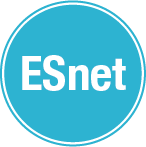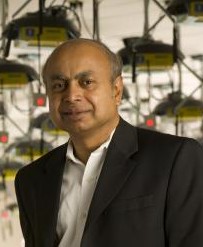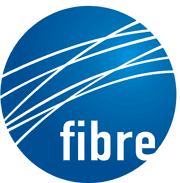Grid computing is the use of widely distributed computer resources to reach a common goal. The grid can be thought of as a distributed system with non-interactive workloads that involve a large number of files. Grid computing is distinguished from conventional high-performance computing systems such as cluster computing in that grid computers have each node set to perform a different task/application. Grid computers also tend to be more heterogeneous and geographically dispersed than cluster computers. Although a single grid can be dedicated to a particular application, commonly a grid is used for a variety of purposes. Grids are often constructed with general-purpose grid middleware software libraries. Grid sizes can be quite large.

A mesh network is a local network topology in which the infrastructure nodes connect directly, dynamically and non-hierarchically to as many other nodes as possible and cooperate with one another to efficiently route data from/to clients. This lack of dependency on one node allows for every node to participate in the relay of information. Mesh networks dynamically self-organize and self-configure, which can reduce installation overhead. The ability to self-configure enables dynamic distribution of workloads, particularly in the event that a few nodes should fail. This in turn contributes to fault-tolerance and reduced maintenance costs.
An overlay network is a computer network that is built on top of another network.
In computer network research, network simulation is a technique whereby a software program models the behavior of a network by calculating the interaction between the different network entities. Most simulators use discrete event simulation - the modeling of systems in which state variables change at discrete points in time. The behavior of the network and the various applications and services it supports can then be observed in a test lab; various attributes of the environment can also be modified in a controlled manner to assess how the network / protocols would behave under different conditions.

The Greek Research and Technology Network or GRNET is the national research and education network of Greece. GRNET S.A. provides Internet connectivity, high-quality e-Infrastructures and advanced services to the Greek Educational, Academic and Research community, aiming at minimizing the digital divide and at ensuring equal participation of its members in the global Society of Knowledge. Additionally, GRNET develops digital applications that ensure resource optimization for the Greek State, modernize public functional structures and procedures, and introduce new models of cooperation between public bodies, research and education communities, citizens and businesses. GRnet's executives have been contributors of or occupied board positions in organisations including GÉANT, TERENA, DANTE,GR-IX, Euro-IX,, RIPE NCC. GRNET provides advanced services to the following sectors: Education, Research, Health, Culture. GRNET supports all Universities, Technological Education Institutes, Research Centers and over 9,500 schools via the Greek School Network a population of more than one million people. Video presentations of some of the services are available in Pyxida.
The next-generation network (NGN) is a body of key architectural changes in telecommunication core and access networks. The general idea behind the NGN is that one network transports all information and services by encapsulating these into IP packets, similar to those used on the Internet. NGNs are commonly built around the Internet Protocol, and therefore the term all IP is also sometimes used to describe the transformation of formerly telephone-centric networks toward NGN.
PlanetLab is a group of computers available as a testbed for computer networking and distributed systems research. It was established in 2002 by Prof. Larry L. Peterson and Prof. David Culler, and as of June 2010, it was composed of 1090 nodes at 507 sites worldwide. Each research project has a "slice", or virtual machine access to a subset of the nodes.

The Energy Sciences Network (ESnet) is a high-speed computer network serving United States Department of Energy (DOE) scientists and their collaborators worldwide. It is managed by staff at the Lawrence Berkeley National Laboratory.
A smart city is an urban area that uses different types of electronic data collection sensors to supply information which is used to manage assets and resources efficiently. This includes data collected from citizens, devices, and assets that is processed and analyzed to monitor and manage traffic and transportation systems, power plants, water supply networks, waste management, law enforcement, information systems, schools, libraries, hospitals, and other community services. The smart city concept integrates information and communication technology (ICT), and various physical devices connected to the network to optimize the efficiency of city operations and services and connect to citizens. Smart city technology allows city officials to interact directly with both community and city infrastructure and to monitor what is happening in the city and how the city is evolving.
In computing, network virtualization or network virtualisation is the process of combining hardware and software network resources and network functionality into a single, software-based administrative entity, a virtual network. Network virtualization involves platform virtualization, often combined with resource virtualization.

Locator/ID Separation Protocol (LISP) is a "map-and-encapsulate" protocol which is developed by the Internet Engineering Task Force LISP Working Group. The basic idea behind the separation is that the Internet architecture combines two functions, routing locators and identifiers in one number space: the IP address. LISP supports the separation of the IPv4 and IPv6 address space following a network-based map-and-encapsulate scheme. In LISP, both identifiers and locators can be IP addresses or arbitrary elements like a set of GPS coordinates or a MAC address.
LOBSTER was a European network monitoring system, based on passive monitoring of traffic on the internet. Its functions were to gather traffic information as a basis for improving internet performance, and to detect security incidents.
A living lab is a research concept. A living lab is a user-centered, open-innovation ecosystem, often operating in a territorial context, integrating concurrent research and innovation processes within a public-private-people partnership.
OpenNebula is a cloud computing platform for managing heterogeneous distributed data center infrastructures. The OpenNebula platform manages a data center's virtual infrastructure to build private, public and hybrid implementations of infrastructure as a service. The two primary uses of the OpenNebula platform are data center virtualization solutions and cloud infrastructure solutions. The platform is also capable of offering the cloud infrastructure necessary to operate a cloud on top of existing infrastructure management solutions. OpenNebula is free and open-source software, subject to the requirements of the Apache License version 2.
Software-defined networking (SDN) technology is an approach to cloud computing that facilitates network management and enables programmatically efficient network configuration in order to improve network performance and monitoring. SDN is meant to address the fact that the static architecture of traditional networks is decentralized and complex while current networks require more flexibility and easy troubleshooting. SDN attempts to centralize network intelligence in one network component by disassociating the forwarding process of network packets from the routing process. The control plane consists of one or more controllers which are considered as the brain of SDN network where the whole intelligence is incorporated. However, the intelligence centralization has its own drawbacks when it comes to security, scalability and elasticity and this is the main issue of SDN.
Many universities, vendors, institutes and government organizations are investing in research around the topic of cloud computing:

The Industrial Internet Consortium (IIC) is an open membership organization, with 258 members as of 22 November 2016. The IIC was formed to accelerate the development, adoption and widespread use of interconnected machines and devices and intelligent analytics. Founded by AT&T, Cisco, General Electric, IBM, and Intel in March 2014, the IIC catalyzes and coordinates the priorities and enabling technologies of the Industrial Internet.

Dipankar Raychaudhuri is the Director of Wireless Information Network Laboratory WINLAB and distinguished professor in the Electrical and Computer Engineering department at Rutgers University.












